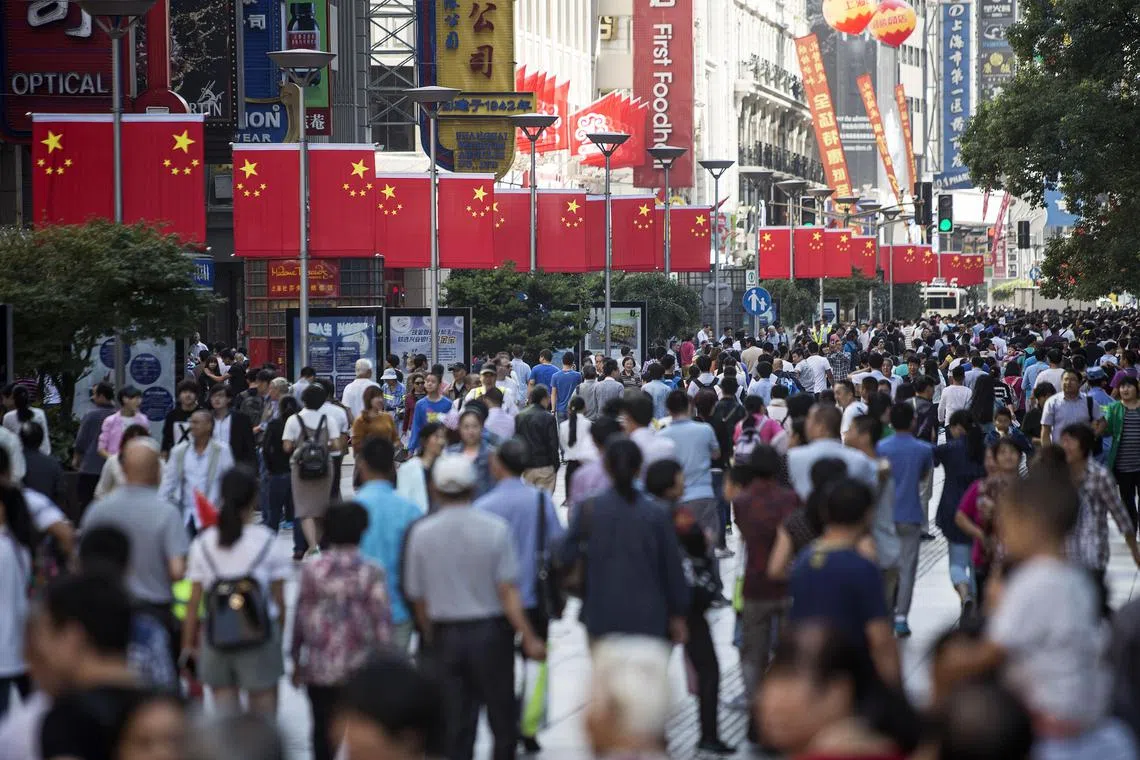China plans record budget deficit, around 5% growth goal in 2025: Sources
Sign up now: Get ST's newsletters delivered to your inbox

The stronger government spending planned for 2025 forms part of China’s preparations to counter the impact of Trump tariff threats.
PHOTO: BLOOMBERG
Follow topic:
BEIJING - Chinese leaders agreed last week to raise the budget deficit to 4 per cent of gross domestic product (GDP) in 2025, its highest on record, while maintaining an economic growth target of around 5 per cent, two sources with knowledge of the matter said.
The new deficit plan compares with an initial target of 3 per cent of GDP for 2024 and is in line with a “more proactive” fiscal policy outlined by leading officials after December’s Politburo meeting and last week’s Central Economic Work Conference (CEWC), where the targets were agreed but not officially announced.
The additional 1 percentage point of GDP in spending amounts to about 1.3 trillion yuan (S$241 billion). More stimulus will be funded through issuing off-budget special bonds, said the two sources, who requested anonymity as they were not authorised to speak to the media. These targets are usually not announced officially until an annual Parliament meeting in March. They could still change before the legislative session.
The State Council Information Office, which handles media queries on behalf of the government, and the Finance Ministry did not immediately respond to a Reuters request for comment.
The stronger fiscal impulse planned for 2025 forms part of China’s preparations to counter the impact of an expected increase in US tariffs on Chinese imports as Donald Trump returns to the White House in January.
The two sources said China will maintain an unchanged GDP growth target of around 5 per cent in 2025. A state media summary of the closed-door CEWC said it was “necessary to maintain steady economic growth”, raise the fiscal deficit ratio and issue more government debt in 2025, but did not mention specific numbers.
Reuters reported in November that government advisers had recommended Beijing not lower its growth target.
The world’s second-largest economy has stuttered in 2024 due to a severe property crisis, high local government debt and weak consumer demand. Exports, one of the few bright spots, could soon face US tariffs in excess of 60 per cent if Trump delivers on his campaign pledges.
The US President-elect’s threats have rattled China’s industrial complex, which sells goods worth more than US$400 billion (S$540 billion) annually to the US. Many manufacturers have been shifting production abroad to escape tariffs. Exporters say the levies will further shrink profits, hurting jobs, investment and economic growth in the process. They would also exacerbate China’s industrial overcapacity and deflationary pressures, analysts said.
The summaries of the CEWC and the Politburo meetings also flagged that China’s central bank would switch to an “appropriately loose” monetary policy stance, raising expectations of more interest rate cuts and liquidity injections.
The previous “prudent” stance that the central bank had held for the past 14 years coincided with overall debt – including that of the government, households and companies – jumping more than five times. The economy expanded roughly three times over the same period.
China is likely to rely heavily on fiscal stimulus in 2025, analysts say, but could also use other tools to cushion the impact of tariffs.
Reuters reported last week, citing sources, that China’s top leaders and policymakers are considering allowing the renminbi to weaken in 2025 to mitigate the impact of punitive trade measures.
The CEWC summary kept a pledge to “maintain the basic stability of the exchange rate at a reasonable and balanced level”. Readouts from 2022 and 2023 also included this line. REUTERS

